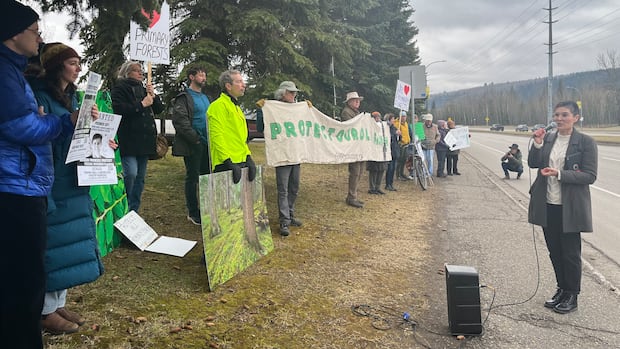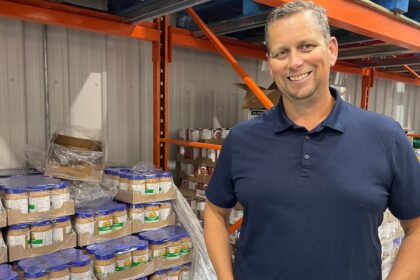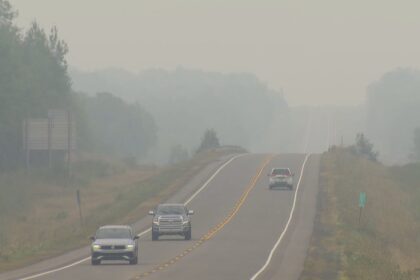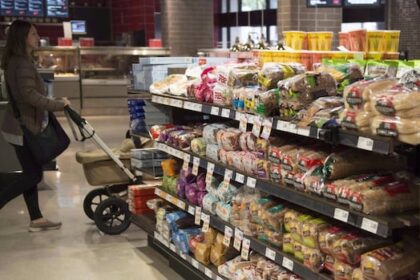British ColumbiaThe rallies are part of a larger movement asking for changes to the current forestry model, with some advocates pushing for economic and environmental sustainability. They feel the status quo increases wildfire and flood risk. Conservation groups in B.C. say the current forestry model is outdated and needs to changeTom Summer · CBC News · Posted: Nov 18, 2025 9:17 PM EST | Last Updated: 4 hours agoListen to this articleEstimated 4 minutesThe audio version of this article is generated by text-to-speech, a technology based on artificial intelligence.Conservation North director Michelle Connolly speaks to demonstrators during a Prince George rally on Nov. 18 calling for the B.C. government to reform logging and forestry. (Hanna Petersen/CBC)B.C. non-profits calling for protection of old growth and primary forests organized protests across the province Tuesday. The rallies are part of a larger movement asking for changes to B.C.’s current forestry model, with some advocates pushing for economic and environmental sustainability. They feel the status quo, and the logging of old-growth forests in particular, increases wildfire and flood risk. Rallies were held by environmentalist groups in more than 10 communities, including Save What’s Left Conservation Society in Nelson and Conservation North in Prince George. “They’ve completely excluded any voices at the table that have conservationalist values,” said Save What’s Left president Joe Karthein. A rally to protect old growth and primary forests was held Nov. 18 in Prince George by advocacy group Conservation North. It’s part of a larger movement asking for reform to B.C. Timber Sales and the province’s current forestry model. (Hanna Petersen/CBC)Karthein says he feels the Ministry of Forests is only listening to industry voices. In May, Save What’s Left released a 52-page report outlining major proposed reforms to B.C. Timber Sales, the provincial agency that handles logging and forest management.WATCH | How U.S. tariffs affect B.C. forestry:What do 45% tariffs mean for B.C.’s forestry sector?The U.S. slapped a 10 per cent tariff on Canadian softwood lumber on top of a 35 per cent tariff that was already in place. As a result, B.C.’s forestry industry, which employs tens of thousands of workers, is facing dire conditions, with ongoing cuts and closures at mills and forestry companies around the province. Harry Nelson, an associate professor at the University of British Columbia’s forestry faculty speaks to CBC’s Dan Burritt, explaining what these tariffs mean for B.C.’s forestry sector.Karthein says there’s major concern for smaller operators, who are struggling to stay afloat. “They’re going to take a beating. And who’s going to have their backs? I’m not so sure this government will have their backs,” he said.”Meanwhile, all these huge subsidies, unbelievable amounts of subsidies are going to these big pulp mills.”Michelle Connolly, the director of advocacy group Conservation North, says logging in old-growth deferral areas has been more aggressive than reported by the province four years ago. “It’s almost like it was targeted. And the effect of that was actually the most pronounced in the Central Interior,” she said.WATCH | Federal support for lumber sector:Carney unveils $1.2B aid package for softwood lumber industry, while visiting B.C.After months of pressure and pleading from B.C., the prime minister is making a significant monetary commitment to help Canada’s beleaguered forestry sector. As Brady Strachan reports, the promises come amid the US-sparked trade war and its impact on one of this province’s major exports. University of B.C. forestry professor Lori Daniels said that, while she agrees major changes are needed in how the province manages its forests, she’s not sure that banning logging in old-growth and primary forests is the way to do it.“With escalating impacts of climate change, droughts, mountain pine beetle, and fire, that model is no longer sustainable,” the professor said.However, she feels there still needs to be some management in old growth and primary forest to remove fuels that increase wildfire risk. “I think there’s transformative changes needed to manage our forests differently — but at the same time, throwing the baby out with the bathwater is not necessarily the solution,” Daniels said. New Forest ActBeyond the rallies, another conservation group is pushing for legislative changes. The Boundary Forest Watershed Stewardship Society has proposed what they call the “New Forestry Act” — a policy framework that would dramatically reduce the annual allowable timber cut to just 20 million cubic metres from its current total of nearly 45 million. “I think it is long past time that people — and the government in particular — looked at how outdated our forestry system and our forestry laws are, and it’s time to change things so that they reflect the current reality,” said society campaign director Jennifer Houghton. Job creation could be shifted to value-added production, tourism, and forest stewardship, which Houghton says would save billions spent on wildfire and flood mitigation. Forests Minister Ravi Parmar said the province was aiming to strike a balance in protecting at-risk old growth forests and ensuring a strong sustainable forestry sector. (Ben Nelms/CBC)In a statement, the Ministry of Forests says there is a desire to modernize forest management in B.C.It says “approximately 2.4 million hectares of old growth being deferred or protected since … November 2021.”WATCH | Forestry minister critical of U.S. after forestry tariffs:B.C. forestry minister says U.S. can no longer be trustedAfter U.S. President Donald Trump imposed punishing tariffs on imported lumber, B.C. Forests Minister Ravi Parmar says the country can no longer be the principal export destination for the province’s lumber sector. He says the province is setting up a forest trade office in the U.K. to diversify its exports in the region.Forests Minister Ravi Parmar said in a Tuesday scrum that he shared the passion that British Columbians have in protecting old-growth forests.”I’m proud of the work that we’re doing to strike the balance of protecting our most at-risk old growth, while also ensuring that we have a strong sustainable sector that produces jobs and prosperity in every corner of the province,” he said.While the province says it understands the passion of conservation groups, forestry advocates feel there’s more concrete action needed.“There’s a lot of grassroots groups and individuals who’ve been going to the Ministry of Forests, they’ve been going to B.C. [Timber Sales] for years, and they’ve been expressing their concerns about the negative impacts of industrial forestry in their communities,” Houghton said. “And they get nowhere. It’s very, very frustrating.” ABOUT THE AUTHORTom Summer is a reporter for CBC News in Fort St. John. Born and raised in the Peace Country, he previously reported for the Alaska Highway News, covering community issues, courts, municipal politics, and Site C, while travelling across Northeast B.C. working on the traditional territory of Treaty 8 First Nations. You can reach him at tom.summer@cbc.caWith files from Hanna Petersen, Jenifer Norwell, and Sumi Ragu
Protests held province-wide urging forestry reform, targeting B.C. Timber Sales












